 This year, the Magnitogorsk company "RusHamon" plans to increase the production of an analogue of the famous Spanish jamon - dry-cured ham - by the end of December by five times compared to last year.
According to Yevgeny Chepurin, director of RusHamon LLC, now the enterprise, founded in 2008, processes about a ton of raw materials per month and produces iconic products - dry-cured and raw-smoked meat delicacies from premium pork based on classic recipes of Russian cuisine.
The main part of the products is sold through online marketplaces to customers from Moscow and St. Petersburg, but in an interview with the regional agency URA.RU, the head of the.
Read more...
This year, the Magnitogorsk company "RusHamon" plans to increase the production of an analogue of the famous Spanish jamon - dry-cured ham - by the end of December by five times compared to last year.
According to Yevgeny Chepurin, director of RusHamon LLC, now the enterprise, founded in 2008, processes about a ton of raw materials per month and produces iconic products - dry-cured and raw-smoked meat delicacies from premium pork based on classic recipes of Russian cuisine.
The main part of the products is sold through online marketplaces to customers from Moscow and St. Petersburg, but in an interview with the regional agency URA.RU, the head of the.
Read more...
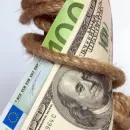 The Eurasian Intergovernmental Council, the governing body of the Eurasian Economic Union (EAEU) has been meeting at Lake Issyk-Kul in Kyrgyzstan, to coordinate numerous factors concerning the EAEU member states, which include Armenia, Belarus, Kazakhstan, Kyrgyzstan and Russia. A major issue has been the development of changes to settle transactions in respective currencies and to dedollarize their economies.
Mikhail Mishustin, a qualified economist also serving as the Prime Minister of Russia, stated that the transactional volumes of EAEU national currencies in mutual international settlements within the EAEU has grown to 75% of the total. According to a representative.
Read more...
The Eurasian Intergovernmental Council, the governing body of the Eurasian Economic Union (EAEU) has been meeting at Lake Issyk-Kul in Kyrgyzstan, to coordinate numerous factors concerning the EAEU member states, which include Armenia, Belarus, Kazakhstan, Kyrgyzstan and Russia. A major issue has been the development of changes to settle transactions in respective currencies and to dedollarize their economies.
Mikhail Mishustin, a qualified economist also serving as the Prime Minister of Russia, stated that the transactional volumes of EAEU national currencies in mutual international settlements within the EAEU has grown to 75% of the total. According to a representative.
Read more...
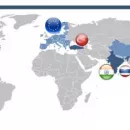 The import of goods to Russia from abroad is gradually recovering after the most severe sanctions. This recovery is primarily driven by supplies from Asia and, interestingly, includes imports from countries that have joined the sanctions. Russian imports are growing as East Asia replaces supplies from the EU.
The recovery in imports can be attributed to the rebuilding of supply chains and a strong ruble, however, although consumer imports are growing, investment imports are still in a difficult position with unclear prospects for a recovery.
The spring collapse of Russian imports was unprecedentedly strong. Data from the European Central Bank for May showed that this.
Read more...
The import of goods to Russia from abroad is gradually recovering after the most severe sanctions. This recovery is primarily driven by supplies from Asia and, interestingly, includes imports from countries that have joined the sanctions. Russian imports are growing as East Asia replaces supplies from the EU.
The recovery in imports can be attributed to the rebuilding of supply chains and a strong ruble, however, although consumer imports are growing, investment imports are still in a difficult position with unclear prospects for a recovery.
The spring collapse of Russian imports was unprecedentedly strong. Data from the European Central Bank for May showed that this.
Read more...
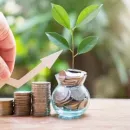 The prospects for agriculture in the Far East will be the topic of one of the sessions as part of the business program of the VII Eastern Economic Forum, which will be held from September 5 to 8 in Vladivostok.Its participants will discuss the issues of self-sufficiency of the regions of the Far East with agricultural products in modern realities, the press service of the Roscongress Foundation told.
Among the speakers of the session "Agriculture: what you sow, so you reap": General Director of the National Union of Milk Producers (Soyuzmoloko) Artem Belov;General Director of the National Union of Poultry Breeders Sergey Lakhtyukhov and General Director.
Read more...
The prospects for agriculture in the Far East will be the topic of one of the sessions as part of the business program of the VII Eastern Economic Forum, which will be held from September 5 to 8 in Vladivostok.Its participants will discuss the issues of self-sufficiency of the regions of the Far East with agricultural products in modern realities, the press service of the Roscongress Foundation told.
Among the speakers of the session "Agriculture: what you sow, so you reap": General Director of the National Union of Milk Producers (Soyuzmoloko) Artem Belov;General Director of the National Union of Poultry Breeders Sergey Lakhtyukhov and General Director.
Read more...
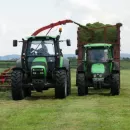 Digital transformation in the agro-industrial complex will help achieve food security, improve the efficiency of production processes and the availability of products, the government of the Novosibirsk Region is sure.
According to the government of the region, the agro-industrial complex of the Novosibirsk region uses more than a dozen technologies in the crop industry, for example, elements of precision farming are used by 137 farms on an area of almost a million hectares, a parallel driving system is used by 176 farms on an area of about a million hectares, satellite monitoring of agricultural machinery is also used , and differentiated.
Read more...
Digital transformation in the agro-industrial complex will help achieve food security, improve the efficiency of production processes and the availability of products, the government of the Novosibirsk Region is sure.
According to the government of the region, the agro-industrial complex of the Novosibirsk region uses more than a dozen technologies in the crop industry, for example, elements of precision farming are used by 137 farms on an area of almost a million hectares, a parallel driving system is used by 176 farms on an area of about a million hectares, satellite monitoring of agricultural machinery is also used , and differentiated.
Read more...
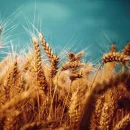 As a result of a sharp decline in agricultural exports, the Russian domestic market risks facing a dangerous oversupply of grain and wheat.It is reported by "Rossiyskaya Gazeta" with reference to market participants.
“With the huge harvest that Russia already has, exports should be tens of percent higher than the average.We are threatened with overstocking of the domestic market,” Andrey Sizov, head of the Sovecon analytical agency, warned.
The volume of export of grain crops, according to the data at the beginning of this week, amounted to 2.7 million tons, of which 2.2 million tons fell on the export of wheat.For comparison, at the end of 2021,.
Read more...
As a result of a sharp decline in agricultural exports, the Russian domestic market risks facing a dangerous oversupply of grain and wheat.It is reported by "Rossiyskaya Gazeta" with reference to market participants.
“With the huge harvest that Russia already has, exports should be tens of percent higher than the average.We are threatened with overstocking of the domestic market,” Andrey Sizov, head of the Sovecon analytical agency, warned.
The volume of export of grain crops, according to the data at the beginning of this week, amounted to 2.7 million tons, of which 2.2 million tons fell on the export of wheat.For comparison, at the end of 2021,.
Read more...
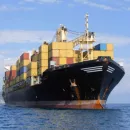 The importation of goods to Russia from abroad is gradually recovering, including in the auto industry where delivered imports in July increased by 2.5 times compared to June. However, other industries are also recovering after the most severe sanctions. This rebound is primarily due to supplies from Asia, and interestingly includes imports from countries that have joined the sanctions.
Russian analysts have explained the recovery of imports due to the debugging of supply chains and a strong ruble, but note that consumer imports are growing, while investment imports are still in a difficult position with unclear prospects for a revival.
The spring collapse in.
Read more...
The importation of goods to Russia from abroad is gradually recovering, including in the auto industry where delivered imports in July increased by 2.5 times compared to June. However, other industries are also recovering after the most severe sanctions. This rebound is primarily due to supplies from Asia, and interestingly includes imports from countries that have joined the sanctions.
Russian analysts have explained the recovery of imports due to the debugging of supply chains and a strong ruble, but note that consumer imports are growing, while investment imports are still in a difficult position with unclear prospects for a revival.
The spring collapse in.
Read more...
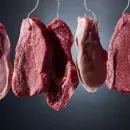 In 2000-2021 there was a steady increase in meat production in the Russian Federation. At the same time, some stagnation of indicators was noted in 2021 - the growth rate slowed down significantly.
Thus, the production of meat of all types in 2021 amounted to 11346.1 thousand tons in slaughter weight, which is only 1.1% (124.1 thousand tons) more than in 2020.
In 2021, compared to 2020, pork production increased by 0.5%, beef - by 2.4%, poultry meat - by 1.2%, lamb and goat meat - by 0.3%, other types of meat - decreased by 0.1%.
Over 5 years (by 2016), the production of meat of all types in Russia in slaughter weight increased by 15.1% (by 1,492.8 thousand tons), over.
Read more...
In 2000-2021 there was a steady increase in meat production in the Russian Federation. At the same time, some stagnation of indicators was noted in 2021 - the growth rate slowed down significantly.
Thus, the production of meat of all types in 2021 amounted to 11346.1 thousand tons in slaughter weight, which is only 1.1% (124.1 thousand tons) more than in 2020.
In 2021, compared to 2020, pork production increased by 0.5%, beef - by 2.4%, poultry meat - by 1.2%, lamb and goat meat - by 0.3%, other types of meat - decreased by 0.1%.
Over 5 years (by 2016), the production of meat of all types in Russia in slaughter weight increased by 15.1% (by 1,492.8 thousand tons), over.
Read more...
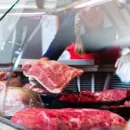 Meat production in Russia in January-July 2022 increased by 7.2 percent from the same period last year, to 1.9 million tons. This was reported in Rosstat.
The output of cattle meat, as well as lamb, goat meat, pork, horse meat and meat of other farm animals increased by 6.4 percent last month to 278,600 tons from the same month last year. The production of steam, cooled and chilled pork increased by 9.1% or up to 255 thousand tons. In total, over seven months, compared to the same period last year, it increased by 8.1 percent to 1.7 million tons. In chilled poultry meat, on the contrary, it decreased by 1.3 percent to 1.7 million tons. In general, over the seven months.
Read more...
Meat production in Russia in January-July 2022 increased by 7.2 percent from the same period last year, to 1.9 million tons. This was reported in Rosstat.
The output of cattle meat, as well as lamb, goat meat, pork, horse meat and meat of other farm animals increased by 6.4 percent last month to 278,600 tons from the same month last year. The production of steam, cooled and chilled pork increased by 9.1% or up to 255 thousand tons. In total, over seven months, compared to the same period last year, it increased by 8.1 percent to 1.7 million tons. In chilled poultry meat, on the contrary, it decreased by 1.3 percent to 1.7 million tons. In general, over the seven months.
Read more...
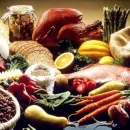 From August 16 to August 22, prices on world food markets slightly decreased (-0.4% after -0.6% a week earlier).In annual terms, in August, the growth of world prices amounted to 5.7% y/y.This is stated in the review "On the current price situation", prepared by the Ministry of Economic Development of the Russian Federation.
In the reporting week, quotations for wheat in France (-5.3%), soybean oil (-2.3%) and pork (-2.7%) continued to decline, and prices for wheat in the US also corrected downward (-2.0 %) and raw sugar (-1.8%) after rising last week.At the same time, prices for corn (+3.7%) and soybeans (+3.9%) rose noticeably.The cost of beef and palm.
Read more...
From August 16 to August 22, prices on world food markets slightly decreased (-0.4% after -0.6% a week earlier).In annual terms, in August, the growth of world prices amounted to 5.7% y/y.This is stated in the review "On the current price situation", prepared by the Ministry of Economic Development of the Russian Federation.
In the reporting week, quotations for wheat in France (-5.3%), soybean oil (-2.3%) and pork (-2.7%) continued to decline, and prices for wheat in the US also corrected downward (-2.0 %) and raw sugar (-1.8%) after rising last week.At the same time, prices for corn (+3.7%) and soybeans (+3.9%) rose noticeably.The cost of beef and palm.
Read more...
© Inline LLC 2015-2025. Privacy Policy | Terms of Service